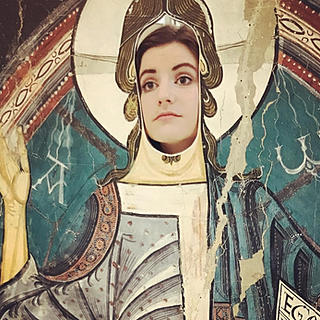Boobies, Conquistadors, and Other Things We Put up on Pedestals
- Katlyn Roberts
- Jan 24, 2020
- 3 min read
What’s more interesting than the history a public statue represents? How that statue got there in the first place.

It occurs to me that I write about statues a lot.
I didn’t mean for this to happen. Frankly, before I became a tour guide in San Francisco, I never understood the point of examining public statues. I suppose I saw them simply as pretty decor for the city landscape. They were there to make things more aesthetically pleasing but they weren’t especially worthy of my attention. Like a generic painting on the wall of a hotel room, they faded into the background.
The fact that a majority of public statues tend to be naked women enforced this attitude. Sure, you could call your statue “Lady Victory” or “Lady Justice”, but really, you’re just a rich old man with public influence using some sketchy historical colonial event as an excuse to put more boobies into your daily commute to work, right? And it’s ok because they’re classy boobies, the kind you only expose when something good and virtuous has happened …like a war. Not the kind of boobies you arrest the ladies in the red light district for flashing in the street.
A perfect example is San Francisco’s Dewey Monument.

Built to commemorate Commodore Dewey’s destruction of the Spanish Fleet in the Battle of Manila Bay at the end of the Spanish-American War, the Dewey Monument is a glorification of one entitled country taking over for another as occupiers of the Philippines.
The statue was sculpted by Robert Aitken in 1902 and it’s a representation of Nike, the Greek goddess of victory. She’s got a trident in one hand and a wreath in the other, so she really can’t spare a hand to pull the front of her dress up over her boobie. According to The Encyclopedia of San Francisco by Christopher Craig, “This statue was selected from a number of entries and only barely made the cut, thanks to the crucial vote of the chair of the Citizens’ Committee, Adolph Spreckels.”
You see, Adolf — wealthy owner of the Spreckles Sugar Company — was obsessed with the young woman who had modeled for the statue, Alma DeBretteville.

Alma (also known as “Big Alma”) was the six-foot-tall daughter of Dutch immigrants. While attending the Mark Hopkins Institute of Art, she became a nude model and earned enough money to gain entry into certain social circles.
Alma’s “relationship” with a local miner named Charlie Anderson became news when she successfully sued him for “personal defloweration”. What this means, exactly, is debatable. Either Alma was led to believe that they were going to get married and he backed out at the last minute or this was one of the only ways a victim of sexual assault could get any legal justice back then.
After a 5-year courtship with Adolf, that sugar baron whose deciding vote had put her up on the most prominent pedestal in town, Alma married the old man and began calling him her “sugar daddy”, coining the term. When questioned about their 25-year age difference, she said, “I’d rather be an old man’s darling than a young man’s slave”.
Alma didn’t spend her whole life stuck between a rock and a marble slab, though. Adolf died in 1924 of tertiary syphilis he never told her about and Alma, having narrowly avoided contracting the disease herself, became rich beyond her wildest dreams.
She spent the rest of her life giving back to the community by running an endless list of charities and building what I would argue is the best art museum in San Francisco, the California Palace of the Legion of Honor. She was a brash, sassy, autonomous woman; a rags-to-riches story who spoke her mind and drank a lot, and yet she was extremely socially conscious and politically liberal — the perfect San Francisco mascot.
The Dewey Monument now lives a double life. Locals adore it for its secret association with Alma, whereas visitors may curiously read the plaque at the bottom about some “hero” of some largely forgotten war, shrug, and go have lunch at the nearby Cheesecake Factory.
One would think that, with the recent debate over statues in the American South that glorify certain confederate figures and victories, the Dewey statue would have come under some scrutiny as well, but there’s been very little.
In 2012, local artists performed a public art piece at the base of the monument to “draw attention to the costs of war and consider the ways that war can set human migrations in motion — including the resettlement of Filipinos in the San Francisco Bay Area”, but local government has never seriously considered taking the statue down.
You see, statues have this way of only becoming important to people the moment someone suggests taking a critical look. Like the Columbus Monument in Barcelona, Spain.




Comments